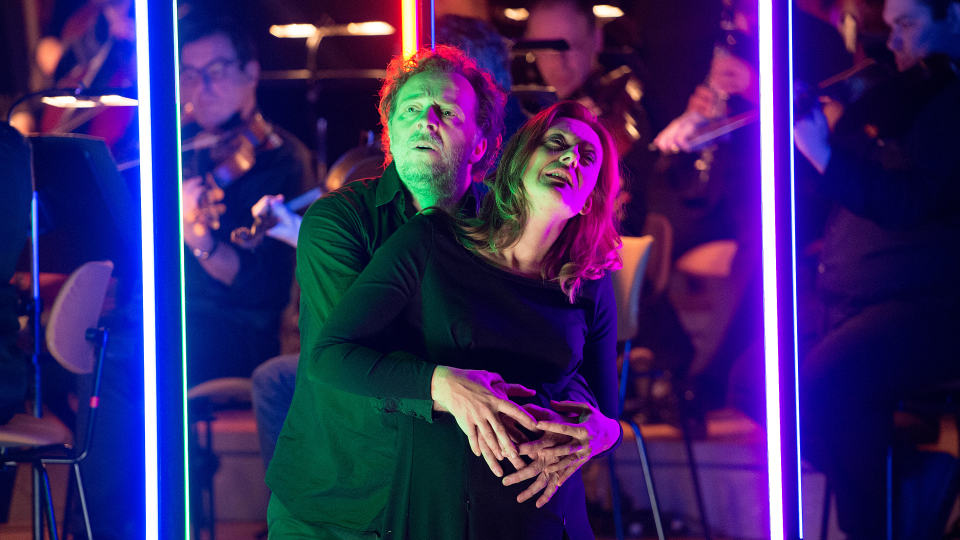Erich Korngold's Die tote Stadt in Paris last night. The principals, Klaus Florian Vogt, Camilla Nylund, and Markus Eiche have been doing this opera together for at least five years, in many cities and usually with Mikko Franck as conductor. The photo above comes from the production by Kasper Holten which is rather good. Those who've been following this cast on their progress of Die tote Stadt across Europe will have had a good idea of what to expect, and the performance delivered well. A very enjoyable evening!
Mikko Franck was unable to appear last night, so the Orchestre Philharmonique de Radio France was conducted instead by Marzena Diakun. The OPRF chose Franck as their chief conductor because he's wonderful. Together they're a formidable team. Franck has chronic health problems, so they're also wise to support him with an an interesting alternative conductor in Marzena Diakun Read more about her HERE. Die tote Stadt is a challenge to conduct, predicating as it does on an unsettling dichotomy between lush chromatics and something more disturbing.The music is so beautiful that it can hypnotise. Paul is a psychological vampire, feeding on necrophiliac obsession. But it's not healthy! His friend Frank recoils in horror. Perhaps it's significant that the roles of Frank and Fritz are taken by the same singer, for Marietta and the theatre troupe jolt Paul back into the real world. It's not hard to read the undercurrents. Julius Korngold was a domineering father who perhaps expected to shape his son in his own image. Erich didn't rebel outright, but did his own thing resolutely, marrying a woman his father didn't like, and moving to America not as an exile but because he saw where his destiny might lie. Father and son jointly wrote the libretto for the opera, under a shared pseudonym, but it's pretty clear who holds the real balance of power. Paul goes forwards, not back.
A conductor can luxuriate in the luscious Old Vienna harmonies, but ultimately almost Expressionist tensions propel the music forward. We hear the bells of Bruges toll, ominously, as if the city and its traditions were falling down on Paul, as if to suffocate him. But the finale with its brave, bold cadences suggests that Paul is waking from the psychic fog that envelops his mind. Diakun is good - she'd hardly have that job if she wasn't - and though she's no match for Metzmacher, Franck and others, she knows that Die tote Stadt isn't regressive, but modern. Please also see my other posts on Korngold, including Into the Soul of Erich Korngold, written just over seven years ago.










